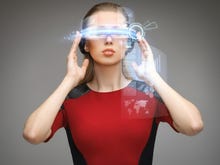
Training surgeons on dead bodies is still standard in many medical programs, but those days may be coming to an end. Advances in kinesthetic haptics and 3D spatial technology with high-fidelity graphics are about to put the final nail in the cadaver coffin and render risky human surgical training obsolete.
There a several innovative players in the medical education technology space. As we’ve reported, Healthcare boasted $2.14 billion of the total virtual reality market in 2018, according to a report from BIS Research. The company’s “Global Augmented Reality and Virtual Reality Market in Healthcare – Analysis and Forecasts, 2019-2025” estimates that the market will reach $11.14 billion by 2025.
One firm, FundamentalVR, has just unveiled new capabilities to its Fundamental Surgery platform that, according to the company, brings a level of sensory realism not previously seen with immersive technology making it a credible alternative to traditional medical education methods. The solution includes advanced soft tissue capabilities that allow surgeons to manipulate, feel, and explore the texture of anatomy as if in the room and opens the door for accelerated skills acquisition in even more intricate procedures.
“We are proud to offer industryleading technology proven to accelerate learning and transformtraditional teaching practices into cost effective, safe methodologies,” said Richard Vincent, co-founderand CEO of FundamentalVR. “With the addition ofadvanced soft tissue sensationcapabilitiesusers areable to make independent decisions about approach and patient interaction and have full high-fidelity control, feeling and vision as they make that interaction. We have brought a new level of realism to medical education to an extent that the need for surgeons to practice in wet labs, on cadavers or patients could be eliminated within just a few years.”
The secret sauce could be a meeting of two technologies whose development has skyrocketed in the age of mobile computing: VR and haptics. FundamentalVR combines VR with full force and haptic feedback technology, which means it can simulate the same sights, sounds, and sensations you might encounter in real life. In the simulation pictured above, you would actually feel the different soft tissue textures and movements within a submillimeter of accuracy.





















